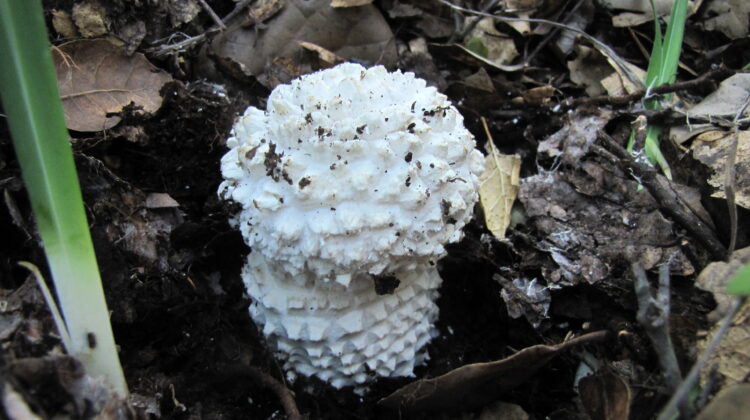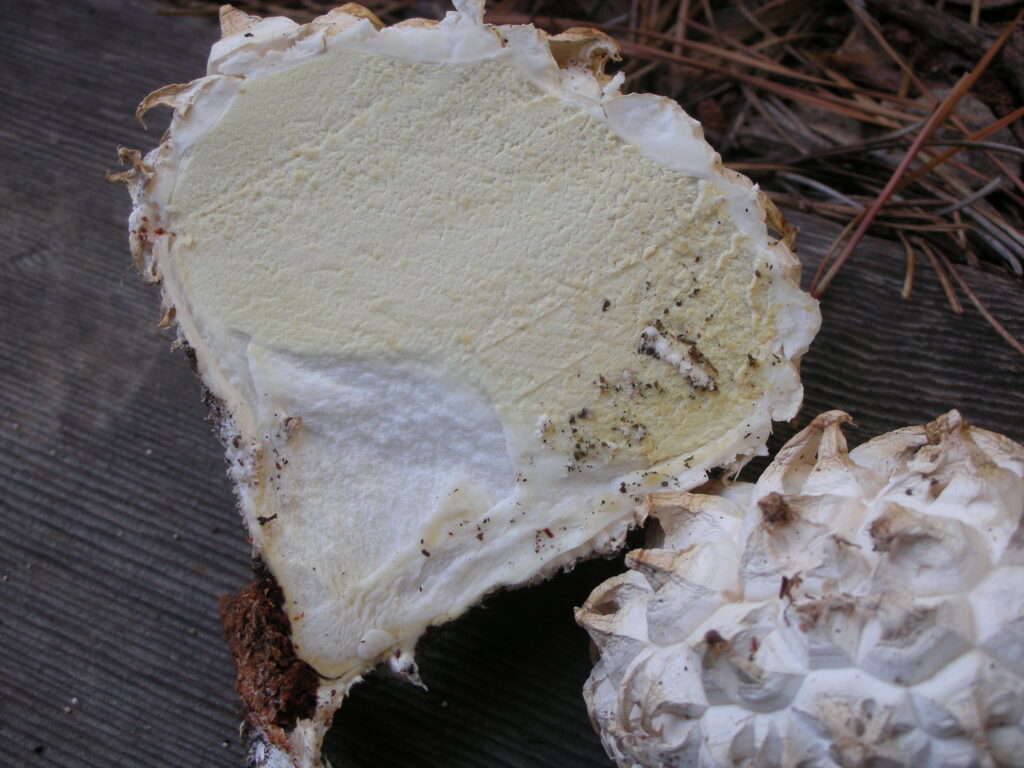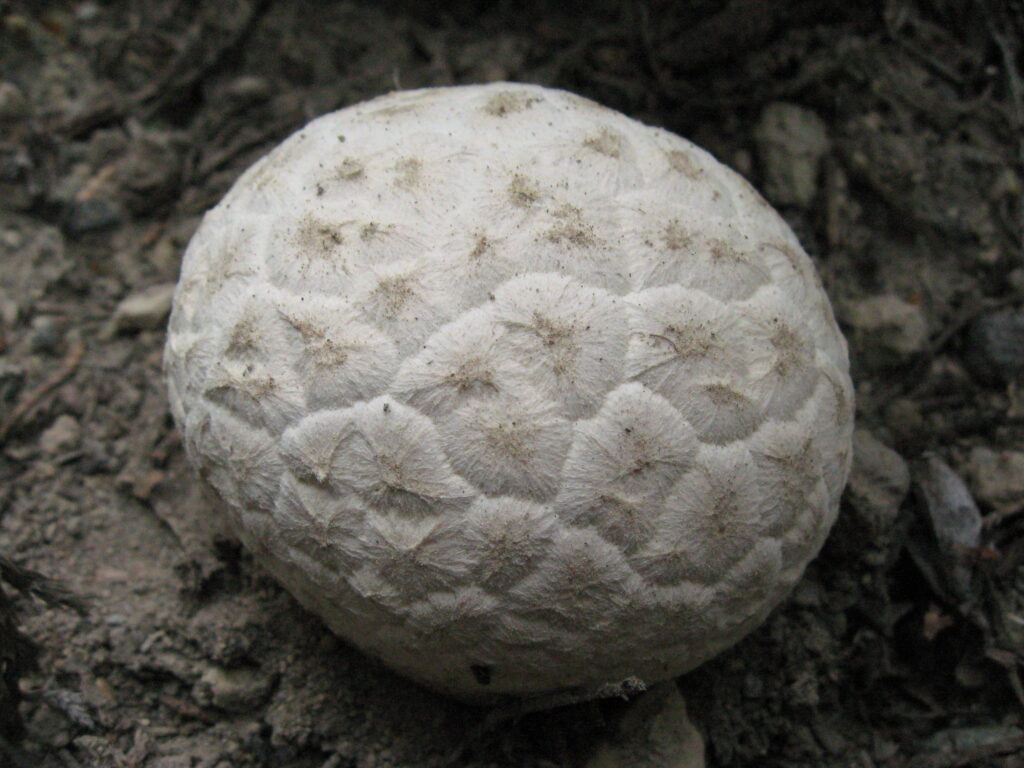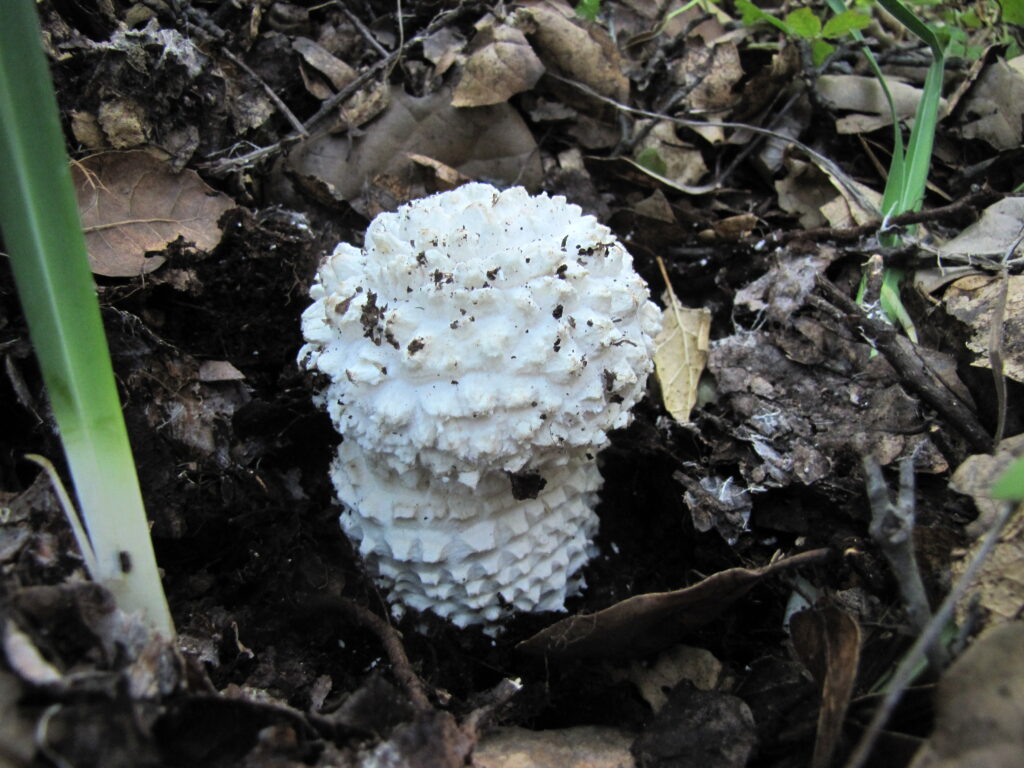
Calvatia sculpta, also known as the sculpted puffball, is a unique species of puffball fungus belonging to the family Agaricaceae. With a height of up to 8 to 15 cm and a width of 8 to 10 cm, the fruit body is pear- or egg-shaped, with large pyramidal or polygonal warts covering its surface. The mushroom is edible when young but is inedible when the spores inside the fruit body disintegrate into brownish powder.

Taxonomy and Naming
The sculpted puffball was first described in 1885 by American mycologist Harvey Willson Harkness, who discovered the fruit bodies growing in the Sierra Nevada mountains between 1,800 and 2,400 meters (5,900 and 7,900 ft) elevation. Harkness classified the puffball in the puffball genus Lycoperdon but later classified it under Calvatia because of its similarity with Calvatia caelata.
Description


The fruit body of the sculpted puffball is white and pear- or egg-shaped, and its exoperidium, the outer layer of tissue, is covered with long, pointed, pyramid-shaped warts that bear horizontal lines towards the base. David Arora, a mycologist, described the appearance of the puffball as “a cross between a geodesic dome and a giant glob of meringue”. When young, the gleba or the interior of the puffball is firm and yellowish-white, but as it matures, it becomes powdery and deep olive-brown. The spores are roughly spherical, thick-walled, and 3-6 µm in diameter, and are covered with tiny spines or warts. The capillitia, which are thick-walled hyphae in the gleba, are septate with branches that narrow towards the tips.
Similar Species
The sculpted puffball is often confused with Calbovista subsculpta, a similar puffball that is larger and has slightly raised warts with a felt-like texture. Other species that are similar to the sculpted puffball include Calvatia arctica and immature specimens of Amanita magniverrucata.
Habitat and Distribution
The sculpted puffball is found in mountainous regions in western North America, including the Sierra Nevada and the Rocky Mountains. It was discovered in a Brazilian dune in 2008. It grows in areas with rich organic matter, such as meadows and open woods.
Edibility
The sculpted puffball is edible when young, before the spores inside the fruit body disintegrate into a brownish powder. The taste is mild and mushroomy, and the texture is firm and slightly spongy. However, it is important to note that consuming wild mushrooms can be dangerous, and individuals should not consume any wild mushrooms unless they are properly identified by an expert.
Calvatia sculpta, or the sculpted puffball, is a unique and interesting species of puffball fungus. With its distinctive appearance and edible qualities, it is a popular mushroom among mushroom hunters and enthusiasts. However, it is important to exercise caution when foraging for wild mushrooms, as misidentification can lead to serious illness or even death.

Leave a Reply